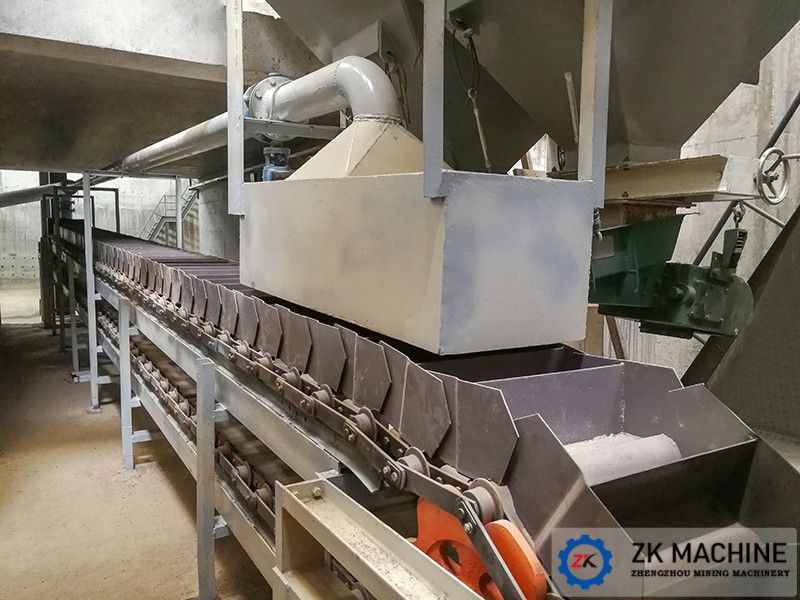Installation Requirements for Apron Conveyor
Date:2020-11-18 15:19:57
Author:admin
Views:
185
The apron conveyor is a kind of plate conveyor, which is suitable for conveying solid materials with little viscosity, as well as materials or articles with large lumps, sharp edges and corners and strong wear on the conveyor. The maximum conveying length is 70 meters; the maximum allowable inclination angle is 25°, and the horizontal belt can be arranged inclined. This machine is suitable for conveying high temperature materials such as cement clinker. The slat conveyor has the advantages of simple structure, low operating resistance, high operating efficiency, long service life, convenient installation and maintenance, multi-point feeding, and flexible equipment process layout.
The apron conveyor is to send each independent component to the site, and complete the assembly work on the site. The specific installation requirements are as follows:
1. According to the installation drawing of the slat conveyor, determine the longitudinal centerline of the equipment, and use the longitudinal centerline as the installation reference of the entire conveyor;
2. On the longitudinal centerline of the conveyor, determine the axis center position of the head axle, and then determine the center position of the tail axle along the longitudinal centerline according to the total length of the conveyor;
3. Based on the above-mentioned centerline, determine the foot position of the relevant rack, the track installation position, and the positioning center of the driving device in sequence;
4. After determining each center position, combined with the civil construction drawings, find out the relevant structural parts and clean their surfaces, and then install the rack according to the requirements of the installation drawings;
5. After the standby rack is installed, install the track;
6. Install the transmission sprocket shaft components and tension sprocket shaft components. When installing, ensure the position tolerance requirements between the sprockets and between the sprocket shafts to prevent large skew and jump of the chain during the meshing process;
7. Install the drive device;
8. When installing the chain, first flatten and straighten each section of the chain on the ground, divide it into several groups according to the length size, and then match and connect each group of chains reasonably to ensure that the total length of the two conveyor chains is basically the same; at the same time; Before the chain is installed, the gear teeth and the chain should be checked for meshing. If the meshing is too tight or too loose, the chain should be replaced; when the two meshing is normal, loosen the tensioning device to the limit position. When the chain is connected in series, Adjust the tensioning device to tighten the chain;
9. Install other accessories, such as: guard, funnel, etc.;
10. Carry out a test run and adjust the parts that do not meet the design requirements.

